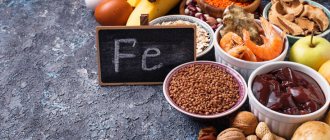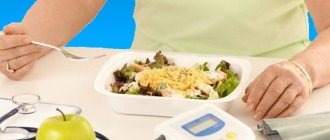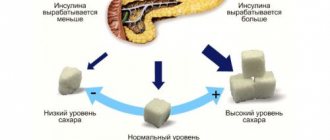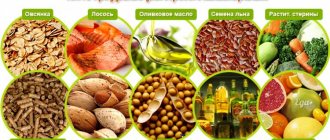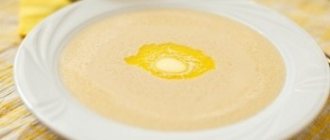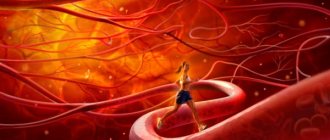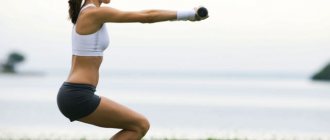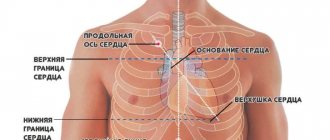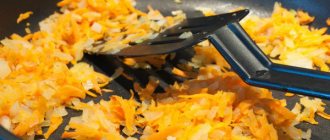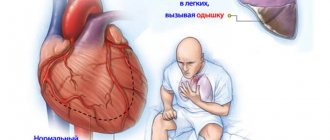General rules
For cardiac diseases, the tenth table and its varieties are recommended. This diet is widely used and used for heart defects , hypertension , cardiosclerosis without pronounced signs of circulatory failure (that is, in the stage of compensation and subcompensation).
What is Diet Number 10, what is its purpose and what are the basic principles of nutrition? Its purpose is to create favorable conditions for blood circulation while fully providing the body with nutrients and energy. This therapeutic food is a complete diet, but with limited salt and liquid.
Therapeutic Diet No. 10 (Table No. 10) according to Pevzner has the following features:
- contains 90 g of proteins (half animal), 80 g fat (one third vegetable) and 350-400 g carbohydrates;
- complete vitamin composition;
- dishes are prepared without salt, salt is allowed in the amount of 5 g in ready-made dishes;
- fluid consumption up to 1.5 liters.
- Regular meals are recommended (4-5 times a day);
- sugar (up to 50 g per day), partially replaced with honey, jam or preserves;
- butter up to 20 g per day and up to 30 g of vegetable oil;
- if you are overweight, limit sugar, flour and cereal products;
- spicy snacks, pickles and seasonings, fatty fried foods, fatty meats and fish, broths are excluded;
- Drinks that stimulate the central nervous system (alcohol, strong tea and coffee) are limited.
These are the basic principles, but the diet has many variations that are adapted to different diseases of the cardiovascular system. For example, nutrition for atherosclerosis consists of reducing the consumption of animal fats, eliminating the intake of cholesterol and easily digestible carbohydrates from food. At the same time, it is planned to increase the consumption of dietary fiber. It is important to increase the proportion of plant and fish proteins in relation to animal proteins.
The diet for hypertension has its own characteristics: limiting salt intake (food is prepared without salt, then food can be added with salt, consuming 5-6 g per day), eliminating substances that excite the central nervous system. Losing weight and maintaining potassium and magnesium levels in the blood are important. For this purpose, rice, millet, raisins, milk, oatmeal, cabbage, prunes, dried apricots, rosehip decoction, beets, bran bread, carrots, potatoes, nuts, perch, and beef are introduced into the diet. With concomitant obesity, additional fasting days are prescribed.
In case of chronic heart failure, salt intake is further limited (2-4 g), and in case of severe edema , its complete exclusion is indicated. Liquid consumption is also limited, and foods that have a diuretic effect are introduced - these are potassium-containing foods (dried apricots, raisins, grapes, apricots, dates, prunes, potatoes, cabbage, figs, rose hips, parsley). Complex and step-by-step diet therapy is prescribed for myocardial infarction .
Diets for various diseases
Many people in Russia (not abroad) are familiar with the M.I. Pevzner diet, recommended for various diseases. They have their own numbers, for example, diet No. 5 for liver diseases or table No. 10 for hypertension and heart disease. In modern dietetics, the Pevzner diet system is considered outdated. In his book “Rational and Medical Nutrition” in 1930, M. I. Pevzner proposed a group nutrition scheme that included 21 dietary tables (actually 15, some of which are divided into a, b, c).
Of course, Pevzner instilled in society the idea that a therapeutic diet is necessary for healing, for which we will always be grateful to him. But his diets were developed for hospitals and sanatoriums of the Soviet Union - both for the purpose of improving health and for the purpose of saving money. Pevzner wrote: “Individual therapeutic nutrition is an expensive pleasure, inaccessible to most people in a sanatorium or hospital. And to feed thousands and millions of people at that time, it was possible to offer only “group” meals, focused “on the disease, and not on a specific patient.”
Today the opposite principle prevails: we treat not a disease, but a patient who may have not one, but several health problems, and sometimes patients come to us with the question of what they should ultimately eat, because recommendations, for example, for constipation and diabetes coupled with coronary heart disease are mutually exclusive, leaving no permitted products. The answer lies not in reading diets verbatim, but in following the principles of therapeutic nutrition. In general, Pevzner tables can be represented as follows:
Table No. 0 After operations - baby food, we minimize mechanical irritation of the mucous membranes, facilitate the absorption of nutrients with a gradual expansion of the diet over the course of a month.
Table No. 1 Stomach diseases with high acidity - day-old bread, lean meat and fish, low-fat dairy products, cereals - rice, buckwheat, semolina are recommended, you can steam omelettes, boiled or baked vegetables, sweet fruits, fermented milk tan, ayran, unsweetened yogurt . Any spicy, highly salty or sour foods, fried foods, canned food and marinades are prohibited.
Table No. 2 Gastritis with low acidity - everything is possible except cabbage, legumes, buns, very fatty foods (avoid bloating).
Table No. 3 Constipation - yesterday's bread, fermented milk products, fresh vegetables and fruits are useful, if the stomach does not hurt, (or heat-treated - for intestinal spasms, since coarse fiber stimulates peristalsis, which can increase pain), dried fruits and compotes from them. Do not eat sour, fatty, spicy, hard-boiled eggs, or strong tea.
Table No. 4 Diarrhea - you can have soups, crackers, cereals - semolina, oatmeal, rice, buckwheat. Food should be free of spices, marinades, coarse fiber, fruits, vegetables, and legumes. Fermented milk products include yoghurt, cottage cheese, and cheese.
Table No. 5 Cholecystitis, pancreatitis - all food and drink should be warm to avoid spasms of the biliary tract. Avoid fatty, fried, smoked, cruciferous vegetables (cabbage, radishes, radishes, turnips), garlic. In case of bile stagnation, a mandatory meal before bed (to empty the gallbladder before the night peak of bile production). In case of acute inflammation of the pancreas - “cold, hunger and rest”, minimize food intake.
Table No. 6 Urolithiasis (urate in the urine) - alkalizing foods are good: dairy, vegetables. You can't eat legumes, smoked meats, or mushrooms. Limit meat, fish, fats, spices, cruciferous vegetables. When kidney stones and diarrhea are combined, vegetables must be heat-treated and milk replaced with the fermented milk product that is best tolerated (cottage cheese, cottage cheese).
Table No. 7 Nephritis - a milk-vegetable diet without fatty, spicy foods, and cruciferous vegetables are again excluded (the kidneys do not like white cabbage and meat, because they contain a lot of nitrogen, which must be actively removed).
Table No. 8 Obesity - counting calories! There are many diets, but they are all ineffective, because the main principle of losing weight is to consume less than you spend. All high-calorie foods are removed - fatty foods, simple carbohydrates (bread, rice, semolina) and sweets, incl. juices, limited to cheese. It is recommended to eat more vegetables to cleanse the intestines.
Table No. 9 Diabetes mellitus - all diabetics already know from the endocrinologist what they can and cannot do, the diet is explained to them at the time of diagnosis, because it is the most important aspect of treatment. White bread, rice, semolina are strictly prohibited (hard varieties of pasta and semolina are limited, red and brown rice are allowed) and, of course, everything sweet and fatty. If you combine diabetes with heart disease, you can still eat fish, but preferably not the fattest one. Beets, which are not accepted by everyone because of their sweetness, are introduced into the diet for constipation, as are dried fruits (prunes, figs, dried apricots) until stool normalization, but under strict glucose control.
Table No. 10 Heart and blood vessels - regarding the diet that prevents heart attacks and strokes, cardiologists and neurologists agreed in a common opinion: fatty sea fish and at least 400 g of vegetables per day are beneficial, but it is better to limit baked goods and animal fats. These recommendations contradict nutrition for diseases of the biliary tract, where fatty fish is not allowed, well, here you either take omega-3 in capsules (instead of fish), or “cover” the main dishes with enzymes (Creon) or choleretic drugs - depending on the clinical situation.
Table No. 11 Tuberculosis, exhaustion - to restore the body you need a lot of calories, meat is especially necessary, you can use spices and any methods of processing food. If exhaustion develops against the background of pancreatitis, the amount of food should be moderate, very frequent, but in small portions and always with enzyme preparations. If you are exhausted due to problems with blood vessels (for example, after a stroke), the diet should be varied, rich, but without animal fats.
Table No. 12 Neuroses - Pevzner considers only increased activity of the nervous system, therefore excludes “provocateurs” - smoked spices, pungency and sauces, sweets, however, for depressive disorders and general weakness, we recommend including “invigorating” foods in the diet - garlic, seasonings, ginger, ginseng, as well as dark chocolate, which has a proven antidepressant effect.
Table No. 13 Acute infectious diseases - a diet without “generally aggressive” foods, everything with the prefix “not too” (not too fatty, spicy, salty, spicy...)
Table No. 14 Urolithiasis (phosphates in the urine) - sour compotes, mushrooms, no pungent foods are good, limit vegetables, dairy products. This table, by the way, is directly opposite to the diet for gastritis - it means that we first reduce the acidity (for example, with pantoprazole), against the background of which we cure the kidneys, and then we adhere to a neutral diet (not acidic, not alkaline food).
Table No. 15 Almost healthy - bran, rye or oat bread, lean meat, offal, fish, seafood, all types of vegetables, herbs are recommended; sweet and sour varieties of fruits, berries, porridge, any pasta, any dairy products, vegetable and butter, natural homemade desserts, nuts, seeds. And chips, soda, smoked meats and sauces (mustard, ketchup, mayonnaise, Tabasco) are not good for anyone. This doesn't mean you can't, it means don't get carried away.
There are general trends in healthy eating in case of any illness and in their absence: meals should be varied, divided (4-5 times a day), include fruits and vegetables, meat and fish, bread and cereals. Oils, fats, and smoked spices are limited in almost any illness; it is better not to consume sauces and soda even if healthy, so that they remain so.
There can be no recommendations regarding each specific product, because, frankly, the effect on the body from ripe and unripe strawberries will vary more than from strawberries and tomatoes.
Not only products are important, but also their quality: for fruits, berries, vegetables - their ripeness, for meat and fish - their fat content, cooking methods, amount of seasonings. With a complete diet, no multivitamins or dietary supplements are needed. (Read the article about multivitamins >>)
So what should you put in your trolley at the supermarket?
1. Vegetables
- Potatoes, sweet potatoes, cauliflower, kohlrabi, broccoli, zucchini, zucchini, pumpkin, beets, carrots, onions, garlic, parsley and celery roots, fennel, parsnips, artichoke, rhubarb, asparagus - you can and should, but it is better to eat them thermally processed , especially for any digestive and stool disorders;
- white cabbage, radishes, radishes, turnips - not worth it if you have diseases of the kidneys or digestive organs, especially if you suffer from bloating;
- tomato, eggplant, pepper - not during exacerbations of gastrointestinal diseases, they can irritate damaged mucous membranes, it is better to eat without peel;
- legumes (green beans and legumes, lentils, peas, mung bean) - a source of protein for those who limit themselves to meat, it is important not to overuse it to avoid flatulence;
- Avocado is an excellent healthy vegetable, but it is fatty and is not recommended for diseases of the biliary tract.
2. Fruit
- sour apples, oranges, lime, lemon, kiwi, pineapple, exotic fruits - it is better not to take in case of exacerbation of gastritis or diarrhea, colitis;
- apricots, plums, dried fruits - perfectly cleanse the intestines
- bananas, sweet apples and pears, watermelon - if you don’t have diabetes, then live vitamins will be useful to everyone
- peaches, pomelo, mangoes, melons - if ripe, they are always good (Avicenna wrote about melons as a cure for many ailments);
- sour berries (fruit drinks) for urate kidney stones (not to be confused with phosphate stones!), not for acid gastritis and constipation.
Hand on heart, the effect on the body from ripe and unripe strawberries will vary more than from strawberries and tomatoes.
Not only products are important, but their quality: for fruits, berries, vegetables - their ripeness, for meat and fish - their fat content and cooking methods, incl. amount of seasonings 3. Greens
- Cucumber (yes, it is more of a green than a vegetable), leafy salads (Chinese cabbage, iceberg, watercress, arugula, etc.), a stalk of celery - fresh daily for everyone.
- Sorrel, spinach, sauerkraut - excluded in case of high acidity and urolithiasis.
4. Bread is better dried or in the form of toast.
It’s better not yeast, but sourdough. For gastritis and diarrhea, white is recommended; for constipation, rye or with bran; for diabetes and obesity, it is better to avoid it altogether. 5. Cereals, pasta White rice, soft semolina, couscous are the most high-calorie and safe for digestion, but they are not recommended for obesity and diabetes, buckwheat and oatmeal, bulgur and hard semolina are also useful for everyone, but pearl barley and millet It is better to cook cereals, red and brown rice outside of exacerbations of gastritis and colitis. Pasta made from durum wheat, as well as from rice and buckwheat flour, is suitable for everyone, even those who are losing weight.
6. Nuts, seeds Walnuts, hazelnuts, peanuts, pistachios, cashews, sunflower seeds, pumpkin seeds, flax seeds, sesame seeds - 30-50 grams per day (as much as fits in a handful), but limit in case of pathology of the biliary tract, because nuts and seeds are very fatty. Can be used as part of grain bread.
7. Oils
- up to 15 ml per day (1 teaspoon 3 times a day) for cholecystitis, pancreatitis, obesity, diabetes.
- up to 50 ml per day in the absence of the need to limit fat.
8. Fish
- Cod fish (cod, hake, pollock, haddock), flounder, perch, catfish and other sea fish should be a constant part of the diet.
- Herring, mackerel, fatty red fish (large trout, sea bass) - not worth it if you have pancreatitis, bile outflow disorder, no more than 150 mg per serving.
- Fish caviar contains a lot of fat, so it is limited in case of cholecystitis and pancreatitis. As a rule, it is highly salted, so if you have gastritis or stool problems, it is also better not to eat it.
9. Meat
- Chicken, turkey, quail, rabbit - recommended for everyone.
- Beef, lean pork - limited in case of any painful conditions, as “heavy” food, until recovery.
The older a person gets, the less red meat he needs.
Increased consumption of animal meat and liver is required for anemia and calcium deficiency. A fried meat crust is not at all healthy, because the phenols contained in the fried side of the cutlet can cause fatty liver, and eating kebab increases the risk of colorectal cancer. Eggs are good for everyone; they contain essential phospholipids (2 yolks contain more than 11 capsules of Essentiale), which normalize the flow of bile. Albumin (egg white) is allergenic, but very easily digestible. 10. Alcohol 1 serving of alcohol once a day is useful, especially in the evening and after meals - it improves blood circulation and prevents the formation of atherosclerotic plaques. True, this rule applies to those who already drink alcohol, but if you have never drank it, then you still shouldn’t start, because... the negative impact on an unprepared liver will outweigh the possible benefits.
1 serving of alcohol is 100 ml of wine for women and 150 ml for men or 30 ml of 40*drinks for women and 50 ml for men. As you drink more, the benefits do not increase, but the liver suffers. Beer has only a negative and multifaceted effect on the body, so it is better to avoid it altogether.
11. Coffee, tea Coffee is recommended by the World Health Organization in the amount of 3 cups of strong drink per day. It is slightly choleretic, so it is not recommended on an empty stomach (to avoid the reflux of bile into the stomach), only after breakfast. Both tea, especially black, and coffee, both brewed and instant, increase acidity, so if you have gastritis, it is better to avoid them.
12. Fermented milk products In our country, 80% of people cannot tolerate milk (stool disorder or allergies), kefir, yoghurt, fermented baked milk are well tolerated by half of the population, but an uncomfortable reaction to some fermented milk products does not mean the same for others. They contain different types of beneficial bacteria, each has its own dominant bacteria in the intestines, and you need the bacteria from yogurt to “make friends” with your native flora and suit a specific person, so the choice of these products is by trial.
Cheese is very high in calories due to fat and contributes to disruption of the outflow of bile, exacerbation of pancreatitis and constipation with large consumption. It is better to eat low-fat and low-salt cheeses, 50g per day. Cottage cheese is not so fatty, it is easier to tolerate, so it does not have such strict weight restrictions.
13. Harmful effects Mayonnaise and ketchup are strictly prohibited if you have pathology of the digestive system, and when possible, it is better not to overuse it. Everything is good in moderation.
Smoked sausages negatively affect the liver due to the content of phenols in them (like fried meat), and seasonings, which are present in large quantities in their composition, irritate the mucous membrane of the stomach and intestines. It’s better not to take them, but if you really want them, then at least boil them, not smoked.
Butter dough disrupts all known digestive processes and can only be consumed as a tasty treat, not often.
Sugar-based sweets without fat (marshmallows, marmalade, marshmallows) are not prohibited if there is no diabetes or obesity. Chocolates contain confectionery fats, the composition of which can often be scary, so the range of their possible negative effects is wide. But dark chocolate is healthy, and in moderate doses of 15 mg per day is even recommended.
Fruit juices are limited in case of high acidity (especially tomato and orange) and diabetes and obesity, because contain on average 13g of carbohydrates per 100ml of water, the same as 8 tablespoons of sugar per glass of tea. Carbonated drinks always increase acidity and tend to cause heartburn; they are especially strictly prohibited in case of ulcers, pancreatitis and gastroesophageal reflux disease.
The main thing is that food should bring not only benefits, but also joy. Eat deliciously and be healthy!
Varieties
- Diet 10A is prescribed for cardiac diseases with circulatory failure of stages II and III (decompensation stage). In this case, it is necessary to relieve the cardiovascular system as much as possible. Therefore, the amount of salt in the diet is further reduced, the calorie content is reduced (the amount of bread is reduced), there are no first courses and the amount of proteins (70 g), fats (70 g) and carbohydrates (300 g) is reduced. Increased intake of potassium and calcium.
- Diet 10B is indicated for rheumatism with low activity, without circulatory problems. The diet has increased protein content (120 g), reduced salt consumption (4 g) and a complete content of vitamins . Dishes are not salted and are served boiled or baked.
- Table 10C is recommended for atherosclerosis , coronary heart disease and atherosclerotic cardiosclerosis . This hypocholesterol or anti-sclerotic diet is aimed at slowing the progression of atherosclerosis, normalizing lipid metabolism and improving overall metabolism . Contains a normal amount of proteins, limited fat (mainly of animal origin), carbohydrates (due to simple ones) and table salt (4 g). Enriched with polyunsaturated fatty acids (vegetable oils) and dietary fiber. There are two options for this table: for non-obese people with a calorie content of 2600-2700 kcal and for those with concomitant obesity (the amount of fat is reduced to 70 g, carbohydrates to 300 g and calorie content to 2200 kcal).
- Table 10P is indicated for patients with rheumatoid arthritis . This is a complete diet, with a slight restriction of fat (70 g) and a reduction in the carbohydrate part (250 g) due to sugar and sweets. Salt is allowed in the amount of 2-3 g per day. Table 10G is recommended for arterial hypertension . Its peculiarity is the exclusion of salt or its presence in a minimal amount (up to 2 g). The daily diet contains increased levels of vitamins, potassium and magnesium salts. Seafood and vegetables included.
- Table 10I is prescribed for patients who have suffered a myocardial infarction and nutrition is aimed at accelerating reparative processes in the heart muscle and improving circulatory function. It has a reduced calorie content, salt and dishes that cause flatulence . Food is served in a semi-liquid state, since the patient is on bed rest. In the first 2 days, only drinks are prescribed (a decoction of dried fruits, weak, slightly sweetened tea). From the third, pureed food in small portions is allowed. Then the diet gradually expands.
Chemical composition and energy value of dietary table No. 10
Proteins: 85–90 g (including 45 g animal proteins). Fats: 70–80 g (including at least 30 g of vegetable fats). Carbohydrates: 300–350 g. Daily calorie content: 2,200–2,400 kcal. Free liquid: 1.5–2 l. Table salt: 6–8 g Vitamins: retinol (A) – 0.3 mg, riboflavin (B2) – 2.5 mg, thiamine (B1) – 1.7 mg, nicotinic acid (B3) – 22 mg, ascorbic acid acid (C) – 150 mg. Macroelements: sodium – 2.6 g, potassium – 4.2 g, calcium – 1 g, phosphorus – 1.8 g. Microelements: iron – 6 mg. Optimal food temperature: from 15 to 65 degrees Celsius.
Authorized Products
Bread may be made from wheat or rye, as well as from peeled flour, whole grain and with bran. You can eat dry cookies, homemade savory baked goods with added bran. The filling can be cottage cheese, cabbage, fish or meat.
Vegetable soup with cereals
Vegetable soups and vegetarian soups with cereals are allowed. They are boiled in water or vegetable broth. Low-fat varieties of meat and poultry are recommended, boiled and baked. To reduce extractive substances, meat must first be boiled and then baked or lightly fried. The diet should consist of fish and seafood dishes.
The side dish is prepared from cabbage, carrots, zucchini, beets, eggplants, pumpkin and potatoes in the form of a vegetable stew. Salads with seasonal vegetables are consumed fresh. For appetizers, vinaigrettes seasoned with vegetable oil, seaweed, and soaked herring are allowed.
Milk and fermented milk products are recommended with reduced fat content, low-fat sour cream (only in dishes) and low-fat cottage cheese. Eggs are allowed up to 4 per week and are cooked soft-boiled. Porridges and casseroles with cottage cheese and vegetables are prepared from pasta and cereals such as barley, buckwheat, millet and oatmeal. With increased weight, cereals and flour products are strictly limited. Butter and vegetable oils are used in dishes and for cooking.
Fruits and berries can be consumed raw, as well as in compotes and jellies. If there is a need to prepare sauces, then they need to be prepared with vegetable broth or milk and tomato sauces with sour cream. You can drink weak tea with milk, coffee substitutes (coffee drinks), vegetable and berry juices. A daily intake of rosehip decoction is recommended.
Table of permitted products
| Proteins, g | Fats, g | Carbohydrates, g | Calories, kcal | |
Vegetables and greens | ||||
| greenery | 2,6 | 0,4 | 5,2 | 36 |
| eggplant | 1,2 | 0,1 | 4,5 | 24 |
| zucchini | 0,6 | 0,3 | 4,6 | 24 |
| cabbage | 1,8 | 0,1 | 4,7 | 27 |
| broccoli | 3,0 | 0,4 | 5,2 | 28 |
| boiled cauliflower | 1,8 | 0,3 | 4,0 | 29 |
| bulb onions | 1,4 | 0,0 | 10,4 | 41 |
| carrot | 1,3 | 0,1 | 6,9 | 32 |
| cucumbers | 0,8 | 0,1 | 2,8 | 15 |
| salad pepper | 1,3 | 0,0 | 5,3 | 27 |
| salad | 1,2 | 0,3 | 1,3 | 12 |
| beet | 1,5 | 0,1 | 8,8 | 40 |
| celery | 0,9 | 0,1 | 2,1 | 12 |
| asparagus | 1,9 | 0,1 | 3,1 | 20 |
| tomatoes | 0,6 | 0,2 | 4,2 | 20 |
| Jerusalem artichoke | 2,1 | 0,1 | 12,8 | 61 |
| pumpkin | 1,3 | 0,3 | 7,7 | 28 |
| lentils | 24,0 | 1,5 | 42,7 | 284 |
Fruits | ||||
| avocado | 2,0 | 20,0 | 7,4 | 208 |
| oranges | 0,9 | 0,2 | 8,1 | 36 |
| pomegranate | 0,9 | 0,0 | 13,9 | 52 |
| grapefruit | 0,7 | 0,2 | 6,5 | 29 |
| pears | 0,4 | 0,3 | 10,9 | 42 |
| kiwi | 1,0 | 0,6 | 10,3 | 48 |
| lemons | 0,9 | 0,1 | 3,0 | 16 |
| mango | 0,5 | 0,3 | 11,5 | 67 |
| tangerines | 0,8 | 0,2 | 7,5 | 33 |
| nectarine | 0,9 | 0,2 | 11,8 | 48 |
| peaches | 0,9 | 0,1 | 11,3 | 46 |
| apples | 0,4 | 0,4 | 9,8 | 47 |
Berries | ||||
| gooseberry | 0,7 | 0,2 | 12,0 | 43 |
| Red currants | 0,6 | 0,2 | 7,7 | 43 |
| black currant | 1,0 | 0,4 | 7,3 | 44 |
Nuts and dried fruits | ||||
| nuts | 15,0 | 40,0 | 20,0 | 500 |
| cashew | 25,7 | 54,1 | 13,2 | 643 |
| sesame | 19,4 | 48,7 | 12,2 | 565 |
| flax seeds | 18,3 | 42,2 | 28,9 | 534 |
| fenugreek seeds | 23,0 | 6,4 | 58,3 | 323 |
| sunflower seeds | 20,7 | 52,9 | 3,4 | 578 |
Cereals and porridges | ||||
| buckwheat (kernel) | 12,6 | 3,3 | 62,1 | 313 |
| oat groats | 12,3 | 6,1 | 59,5 | 342 |
| cereals | 11,9 | 7,2 | 69,3 | 366 |
| millet cereal | 11,5 | 3,3 | 69,3 | 348 |
| barley grits | 10,4 | 1,3 | 66,3 | 324 |
Bakery products | ||||
| Rye bread | 6,6 | 1,2 | 34,2 | 165 |
Confectionery | ||||
| Maria cookies | 8,7 | 8,8 | 70,9 | 400 |
Raw materials and seasonings | ||||
| honey | 0,8 | 0,0 | 81,5 | 329 |
Dairy | ||||
| skim milk | 2,0 | 0,1 | 4,8 | 31 |
| natural yogurt 2% | 4,3 | 2,0 | 6,2 | 60 |
Cheeses and cottage cheese | ||||
| cottage cheese 0.6% (low fat) | 18,0 | 0,6 | 1,8 | 88 |
| curd tofu | 8,1 | 4,2 | 0,6 | 73 |
Meat products | ||||
| beef | 18,9 | 19,4 | 0,0 | 187 |
| rabbit | 21,0 | 8,0 | 0,0 | 156 |
Sausages | ||||
| boiled diet sausage | 12,1 | 13,5 | 0,0 | 170 |
Bird | ||||
| chicken fillet | 23,1 | 1,2 | 0,0 | 110 |
| turkey | 19,2 | 0,7 | 0,0 | 84 |
Fish and seafood | ||||
| fish | 18,5 | 4,9 | 0,0 | 136 |
| squid | 21,2 | 2,8 | 2,0 | 122 |
| mussels | 9,1 | 1,5 | 0,0 | 50 |
| seaweed | 0,8 | 5,1 | 0,0 | 49 |
Oils and fats | ||||
| butter | 0,5 | 82,5 | 0,8 | 748 |
| linseed oil | 0,0 | 99,8 | 0,0 | 898 |
| olive oil | 0,0 | 99,8 | 0,0 | 898 |
| sunflower oil | 0,0 | 99,9 | 0,0 | 899 |
Non-alcoholic drinks | ||||
| mineral water | 0,0 | 0,0 | 0,0 | — |
| green tea | 0,0 | 0,0 | 0,0 | — |
| * data is per 100 g of product | ||||
Fully or partially limited products
Fresh bread, puff and pastry dough, and broths are completely excluded. You cannot prepare soups from legumes, eat fatty pork, duck, goose, cooking fats, kidneys, liver, sausages, canned food and all kinds of smoked meats.
Fatty fish, canned fish and caviar, salted and smoked fish are prohibited. Do not eat fatty cheese and cream, cottage cheese and sour cream. The consumption of radishes, radishes, sorrel, spinach and mushrooms is prohibited. You cannot eat chocolate, ice cream, products with cream, or salty cheeses. Meat, fish, mushroom sauces, mustard, and horseradish are excluded. Strong tea and coffee, cocoa are prohibited.
Dishes made from legumes are limited, as they cause bloating and grape juice for the same reason. If obese , consume grapes, sugar, honey, raisins, and jam in minimal quantities and very rarely.
Table of prohibited products
| Proteins, g | Fats, g | Carbohydrates, g | Calories, kcal | |
Vegetables and greens | ||||
| vegetables legumes | 9,1 | 1,6 | 27,0 | 168 |
| canned vegetables | 1,5 | 0,2 | 5,5 | 30 |
| sauerkraut | 1,8 | 0,1 | 4,4 | 19 |
| pickles | 0,8 | 0,1 | 1,7 | 11 |
| radish | 1,2 | 0,1 | 3,4 | 19 |
| white radish | 1,4 | 0,0 | 4,1 | 21 |
| red radish | 1,2 | 0,1 | 3,4 | 20 |
| black radish | 1,9 | 0,2 | 6,7 | 35 |
| spinach | 2,9 | 0,3 | 2,0 | 22 |
| sorrel | 1,5 | 0,3 | 2,9 | 19 |
Fruits | ||||
| bananas | 1,5 | 0,2 | 21,8 | 95 |
Berries | ||||
| grape | 0,6 | 0,2 | 16,8 | 65 |
Mushrooms | ||||
| mushrooms | 3,5 | 2,0 | 2,5 | 30 |
Nuts and dried fruits | ||||
| raisin | 2,9 | 0,6 | 66,0 | 264 |
Confectionery | ||||
| candies | 4,3 | 19,8 | 67,5 | 453 |
| pastry cream | 0,2 | 26,0 | 16,5 | 300 |
| shortbread dough | 6,5 | 21,6 | 49,9 | 403 |
Ice cream | ||||
| ice cream | 3,7 | 6,9 | 22,1 | 189 |
Cakes | ||||
| cake | 4,4 | 23,4 | 45,2 | 407 |
Chocolate | ||||
| chocolate | 5,4 | 35,3 | 56,5 | 544 |
Raw materials and seasonings | ||||
| mustard | 5,7 | 6,4 | 22,0 | 162 |
| mayonnaise | 2,4 | 67,0 | 3,9 | 627 |
Dairy | ||||
| milk 3.6% | 2,8 | 3,6 | 4,7 | 62 |
| milk 4.5% | 3,1 | 4,5 | 4,7 | 72 |
| cream | 2,8 | 20,0 | 3,7 | 205 |
| sour cream 25% (classic) | 2,6 | 25,0 | 2,5 | 248 |
Cheeses and cottage cheese | ||||
| cheese | 24,1 | 29,5 | 0,3 | 363 |
| cottage cheese 11% | 16,0 | 11,0 | 1,0 | 170 |
| cottage cheese 18% (fat) | 14,0 | 18,0 | 2,8 | 232 |
Meat products | ||||
| pork | 16,0 | 21,6 | 0,0 | 259 |
| pork liver | 18,8 | 3,6 | 0,0 | 108 |
| pork kidneys | 13,0 | 3,1 | 0,0 | 80 |
| pork fat | 1,4 | 92,8 | 0,0 | 841 |
| salo | 2,4 | 89,0 | 0,0 | 797 |
| beef liver | 17,4 | 3,1 | 0,0 | 98 |
| beef kidneys | 12,5 | 1,8 | 0,0 | 66 |
| beef brains | 9,5 | 9,5 | 0,0 | 124 |
Sausages | ||||
| smoked sausage | 16,2 | 44,6 | 0,0 | 466 |
| smoked sausage | 9,9 | 63,2 | 0,3 | 608 |
| sausages | 10,1 | 31,6 | 1,9 | 332 |
| sausages | 12,3 | 25,3 | 0,0 | 277 |
Bird | ||||
| smoked chicken | 27,5 | 8,2 | 0,0 | 184 |
| duck | 16,5 | 61,2 | 0,0 | 346 |
| smoked duck | 19,0 | 28,4 | 0,0 | 337 |
| goose | 16,1 | 33,3 | 0,0 | 364 |
Fish and seafood | ||||
| smoked fish | 26,8 | 9,9 | 0,0 | 196 |
| salted fish | 19,2 | 2,0 | 0,0 | 190 |
| Red caviar | 32,0 | 15,0 | 0,0 | 263 |
| black caviar | 28,0 | 9,7 | 0,0 | 203 |
| canned fish | 17,5 | 2,0 | 0,0 | 88 |
| cod (liver in oil) | 4,2 | 65,7 | 1,2 | 613 |
Oils and fats | ||||
| animal fat | 0,0 | 99,7 | 0,0 | 897 |
| cooking fat | 0,0 | 99,7 | 0,0 | 897 |
Non-alcoholic drinks | ||||
| instant coffee dry | 15,0 | 3,5 | 0,0 | 94 |
| black tea | 20,0 | 5,1 | 6,9 | 152 |
| * data is per 100 g of product | ||||
Diet menu 10th table (diet mode)
4-5 meals a day are organized. If you are prescribed Diet Table No. 10, it will not be difficult to create a menu for every day, knowing the permitted foods and their chemical composition, as well as the amount of salt that can be consumed. For the whole day, 150 g of day-old white bread, 150 g of rye bread, 50 g of sugar and 15 g of butter (in ready-made dishes) are allowed.
Remember that food must be cooked without salt, and then added with salt, using a strictly measured amount of salt. In order not to go beyond these limits, you will have to exclude ready-made meat products and cheeses, which initially contain a large amount of salt.
The menu for the week might look like this:
Monday
| Breakfast |
|
| Lunch |
|
| Dinner |
|
| Dinner |
|
| For the night |
|
Tuesday
| Breakfast |
|
| Lunch |
|
| Dinner |
|
| Dinner |
|
| For the night |
|
Wednesday
| Breakfast |
|
| Lunch |
|
| Dinner |
|
| Dinner |
|
| For the night |
|
Thursday
| Breakfast |
|
| Lunch |
|
| Dinner |
|
| Dinner |
|
| For the night |
|
Friday
| Breakfast |
|
| Lunch |
|
| Dinner |
|
| Dinner |
|
| For the night |
|
Saturday
| Breakfast |
|
| Lunch |
|
| Dinner |
|
| Dinner |
|
| For the night |
|
Sunday
| Breakfast |
|
| Lunch |
|
| Dinner |
|
| Dinner |
|
| For the night |
|
Diet 10C differs little from the main table: it contains the physiological norm of proteins, the amount of animal fat is slightly reduced (by 10 g), simple carbohydrates (from 450 g to 300 g) and salt (up to 4 g). It is important to increase the proportion of plant foods in the diet, dietary fiber and polyunsaturated fatty acids (vegetable fats).
Avoid products that contain hidden animal fats (sausages, sausages, ham, pates, cheeses). Choose lean meat and chicken. Eat less, or better yet, completely eliminate “fast” or simple carbohydrates (this includes sugar, sweets, preserves, cakes, jams, and sweet pastries).
cholesterol levels by consuming omega-3 PUFAs from food (their daily requirement is 2 g). In this regard, the leaders are flax seed, walnuts, mackerel, herring, tuna, and soybeans. Every day you need to consume up to 500 g of fruits and vegetables rich in dietary fiber. A large amount of them is found in bran, whole oatmeal, prunes, gooseberries, raspberries, dates, cranberries, figs, raisins and dried apricots. A little less - in cereals, peas, sweet peppers, carrots, cabbage, eggplants, oranges, pumpkin, quince. Considering all this, it is not difficult to create a menu for the week.
Diet after myocardial infarction
Diet after myocardial infarction is a prerequisite for complex treatment of the patient. Following a diet helps reduce the load on the heart and prevents relapses. The main task of the diet is to help the body restore the processes occurring in the heart muscle as soon as possible, improve metabolism and blood circulation.
- Diet for hemorrhoids with blood: menu for every day, recipes
Basic principles of the diet
• After a heart attack, it is necessary to increase the number of meals to 6-7 times a day, but at the same time reduce the size of portions.
• It is necessary to reduce the caloric intake of the diet, since during bed rest a person requires less energy. Excess calories can lead to insomnia.
• In most patients after a heart attack, lipid metabolism is disrupted, which can lead to atherosclerotic damage to the heart vessels. Therefore, you need to try to improve lipid metabolism by minimizing the consumption of animal fats and cholesterol.
• Avoid eating too cold or hot food.
• It is very important to exclude salt from the diet, as it contributes to the accumulation of fluid in the body and leads to edema, which complicates the functioning of the heart. • Avoid foods that cause gas and bloating.
These include grape juice, carbonated drinks, bread, etc. Food should be light and not cause indigestion
• Avoid foods that cause gas and bloating. These include grape juice, carbonated drinks, bread, etc. The food should be light and not cause indigestion.
• Limit your intake of sugar, it has a bad effect on blood clotting.
- Methods of providing emergency care for myocardial infarction: symptoms of the disease
• Drink no more than 1.5 liters of liquid per day, including jelly and soups. It is best to quench your thirst with fruit or weak black tea.
• The diet after myocardial infarction should include foods containing potassium and magnesium. These are two essential microelements that are necessary for normal heart function. Therefore, patients are recommended to eat nuts, prunes, potatoes, beets, cabbage, buckwheat, seaweed, citrus fruits, and watermelons.
The diet after myocardial infarction is divided into 3 periods, which correspond to the stages of a person’s recovery. During the acute period of the disease, warm liquid food is prescribed. As your health improves, your diet gradually expands.
First period diet menu
The first period lasts 10-14 days after a heart attack. All dishes are prepared pureed and without salt. The calorie content of the daily diet is 800-1000 kcal. There are 7 meals a day every 2-3 hours.
1 – half a glass of prune or yogurt decoction.
2 – half a glass of tea with milk, milk porridge with a small piece of butter, grated apple.
3 – 50 g of boiled chicken, half a glass of rosehip decoction.
4 – 50 g of boiled fish, half a glass of vegetable broth and jelly.
- Diet for hypertensive patients: what foods reduce blood pressure, what can and cannot be eaten?
5 – 100 g of applesauce, half a glass of rosehip decoction.
6 – 50 g of cottage cheese, half a glass of rosehip decoction.
7 – 50 g prune puree.
Second period diet menu
The second period corresponds to 2-4 weeks after a heart attack. The daily calorie intake is 1200-1400 kcal.
1 – half a glass of prune decoction.
2 – milk porridge, 50 g of cottage cheese with 10 g of sour cream, an omelette of 2 proteins, half a glass of tea with milk.
3 – apple and carrot puree, apple fritters, half a glass of rosehip infusion or fruit juice.
4 – 150 g of vegetable broth with croutons, 50 g of boiled chicken or fish, apple jelly.
- Does rosehip increase or decrease blood pressure?
5 – half a glass of yogurt, juice or tea.
6 – 50 g of boiled fish or chicken, beetroot and carrot puree, boiled cauliflower.
7 – half a glass of yogurt or 100 g of prune puree.
Third period diet menu
After 4 weeks, the patient can gradually return to his usual diet, while following all the recommendations and adhering to seven meals a day. The daily calorie intake is about 2000 kcal.
1 – glass of rosehip decoction.
2 – porridge, omelet of 2 proteins and vegetable salad.
3 – 100 g of fruit, 100 g of cottage cheese, half a glass of rosehip decoction.
4 – soup or 75 g of meat with vegetable puree, baked apple or jelly, compote.
5 – apple, half a glass of rose hip decoction.
Recipes
First meal
Vegetable broth with flour dumplings
Vegetable broth, flour, 2 eggs, milk, potatoes, butter, herbs.
Add the egg and milk to the melted butter, beat well, add enough flour to form a viscous dough. Dip the flour mixture in small portions with a teaspoon into the boiling broth in which the potatoes are boiled, boil for 5-7 minutes. Sprinkle with herbs before serving.
Summer vegetable soup
Potatoes, zucchini, carrots, onions, bell peppers, green beans.
Place bay leaf, allspice, chopped potatoes, beans and carrots into boiling water, after 10 minutes add chopped onions, zucchini and bell peppers. Cook until the vegetables are ready. Serve with sour cream.
Second courses
Chicken cutlets
Chicken meat, white bread, milk, onion, 2 eggs, vegetable oil, flour.
Prepare minced chicken, add bread soaked in milk and onion. Add pepper, chopped herbs if desired, and raw eggs. Knead the mixture well, form cutlets, roll them in flour and lightly fry in a frying pan, covering with a lid.
Fish meatballs in sour cream
Minced fish, onion, boiled rice, egg, sour cream, 2 tbsp. l. flour, herbs.
Boil the rice. Add rice, chopped onion, beaten egg, fish spices (without salt) to the minced fish and mix. Form into balls, sprinkle with flour and place on a baking sheet with vegetable oil and bake. At the end, pour sour cream and keep in the oven for a while. Sprinkle with herbs.
Dessert
Carrot-rice pudding
Carrots, egg, rice, butter, breadcrumbs, 1 tbsp. l. sour cream, baking powder.
Boil the rice. Grate the carrots and simmer, add rice and rub everything through a sieve. Add egg, breadcrumbs, melted butter, baking powder to the mixture. Mix thoroughly and bake in a suitable pan for 30-40 minutes. Drizzle with sour cream.
Reviews and results
This therapeutic diet is balanced, which allows patients to constantly comply with it. In general, the food is well tolerated, but many note that at first it was quite difficult to get used to the reduced amount of salt and the absence of smoked meat products in the diet. Some restriction in simple carbohydrates and salt allows you to lose weight and get rid of excess fluid in the body. These treatment results are reported in reviews.
- “... I’m pleased with the results, since such a low-cholesterol diet helped normalize cholesterol, and sugar also became normal. They prescribed a diet in addition to the pills because my cholesterol was high. Nutritional therapy has helped me lose weight and improve my overall health. I continue to eat this way, but sometimes I break it a little”;
- “... A low-salt diet helps a lot. My result: shortness of breath disappeared, it became easy to move because the excess fluid was gone, and my blood pressure returned to normal. I must say that at first it was difficult to eat unsalted food, I really wanted sausages and ham, salted fish, but I endured everything. In addition, in 3 months I lost 5 kg, although I ate normally”;
- “... I have a heart defect, I am worried about shortness of breath, swelling and high blood pressure. This is my main diet for health reasons. It’s enough to eat salty food for 2 weeks and the swelling returns and it becomes difficult to breathe.”
Table No. 0
Recommendations for product types
Indications:
- undergone surgical interventions on the gastrointestinal tract
- rehabilitation of patients in the intensive care unit
- cerebrovascular accident
- after traumatic brain injury
- for patients with infectious diseases who are in serious condition.
Diet: 5–8 times a day
Duration of appointment: as needed
Nutritional features: this diet is designed to restore the patient’s vitality, replenish nutrients and increase the overall resistance of the body. The diet is very strict.
